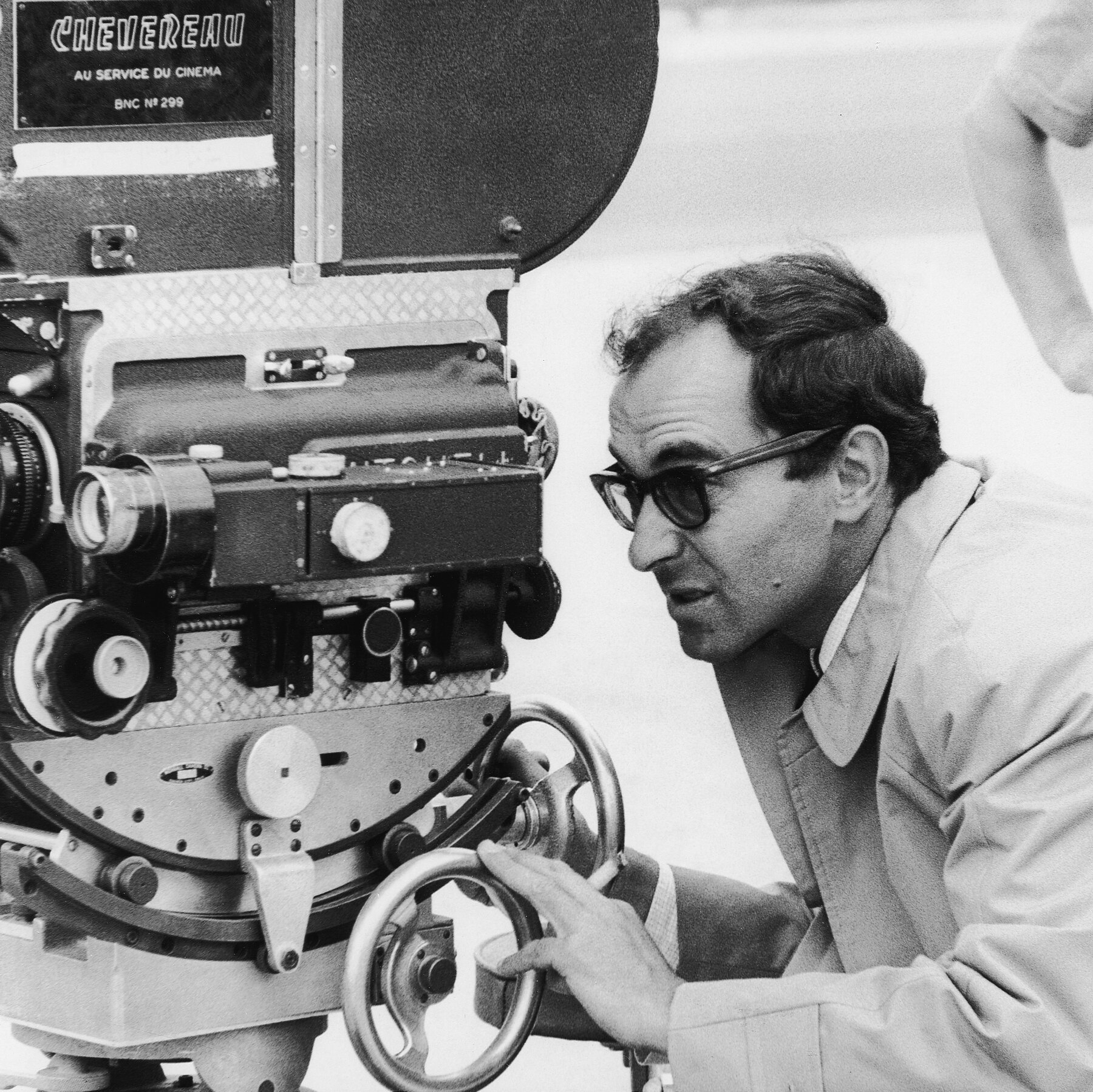
Film Critic Tom Green reflects on filmmaker Jean-Luc Godard’s life and career following his death at age 91
Jean-Luc Godard pioneered the French New Wave, an artistic movement that put cinematic convention to the torch. New Wave not only reconstituted the boundaries of cinematic form, but looked inwardly to ask questions about film’s purpose as art. Godard’s films are inquiries into the medium itself, rejecting plastic, and commercial norms in favour of a freewheeling celebration of art.
After writing for the influential Cahiers du Cinema, he burst onto the filmmaking scene with A bout de souffle (1960), a wild, pinballing story of a car thief hiding from the police after committing a murder. Here, Godard developed many of his own stylistic hallmarks: erratic editing, non-sequitur, metafiction, and intertextuality. In much of his work throughout the 1960s, he captured the rebellious spirit of the French youth, which would later erupt into civil unrest in the May 68 movements.
Godard was also representative of a mounting political radicalism in France. His Marxist disposition heavily influenced the content of his films
Une femme est une femme (1961), Bande a part (1964), Pierrot le Fou (1965) and La Chinoise (1967) all brim with subversive ethos, and contain dozens of references to film, literature, and music. Through intertextuality, he aimed to refute the idea that cinema was somehow an attempt to replicate reality; art is always a product of historical forces, and art is never independent of influence.
Godard was also representative of a mounting political radicalism in France. His Marxist disposition heavily influenced the content of his films, many of which are overt political statements on consumerism and capitalist society. This became clear in the inflammatory La Chinoise (1967), which follows a revolutionary Maoist cell and their plan to assassinate the Soviet Minister of Culture. Godard’s political didacticism is most evident here, and the breakdown of the cell is a commentary on the allure of radical politics as a distraction for disaffected bourgeois youth. He also joined protests in solidarity with the May 1968 movement with fellow New Wave director Francois Truffaut, leading to the closure of Cannes Film Festival that year.
His films are an ongoing conversation about the position of culture in society
Throughout his career, Godard was lampooned as indulgent, pretentious, and undisciplined, but his unruly approach has endured. His films are an ongoing conversation about the position of culture in society, an antithesis to mass produced and soulless cinema. His characters, many of whom model themselves after the jaded protagonists of other films, are often sick of facile mainstream culture. They shield themselves in a carapace of irony to evade heartache, and spring from one precarious situation to the next with disastrous consequences. Many embody a hedonistic nihilism, running from an inescapable modern life. Godard provided some of the best exploration of disaffected youth in increasingly overstimulating times.

Married to the revolutionary messaging is a revolutionary craft. Godard’s breathtaking cinematography, vibrant colours and camera pyrotechnics are beautiful to behold. His worlds are constructed with tremendous set designs: sprawling apartments decorated with rifles and red tape, science fiction supercomputer laboratories, and seedy Parisian bars. There’s a thrill in the disorienting jump cuts of A bout de souffle (1960), and excitement in the kinetic pastiche of Une femme est un femme (1961). Godard’s technical thrift is evident in much of his earlier catalogue, he pulled cinematographer Raoul Coutard in a wheelchair to achieve the effect of a dolly shot and intentionally used cheap props like cereal boxes to show the encroachment of capitalist messaging in everyday life.
Godard’s modern catalogue is still innovative and attempts to create new forms of visual art
As Godard aged, he still remained on the avant-garde. His largest project, Histoire(s) du cinema is an immense decade-spanning attempt to document the history of the moving picture and is considered by many to be his magnum opus. He also made use of unconventional forms in Film Socialisme (2010) and Goodbye to Language (2014), which lack the unsteady pleasure of the New Wave but contain greater consideration and thematic depth. While not as well received as his earlier films, Godard’s modern catalogue is still innovative and attempts to create new forms of visual art.
Godard is rightfully one of history’s most acclaimed directors, he features more than any other director on the ‘Sight and Sound Top 250 Films’, the most comprehensive critic poll to date. His trailblazing work inspired a generation of modern masters to push the boundaries of film. He led the French New Wave with jubilant artistic expression, transforming the potential of cinematic form. Importantly, Godard railed against convention with a blistering critique of consumerism and imperialism and put his political ideas into scathing polemic film. His influence will surely be felt in the craft of new filmmakers, spurring them to elevate their craft.
Enjoyed this? Check out these other articles from Redbrick Film:

Comments